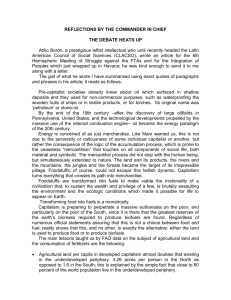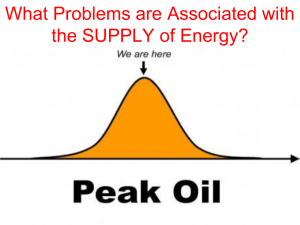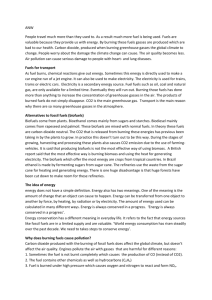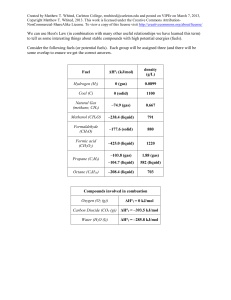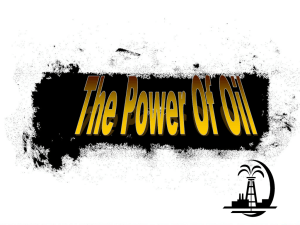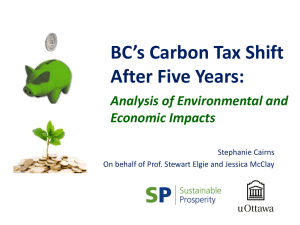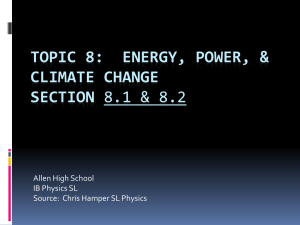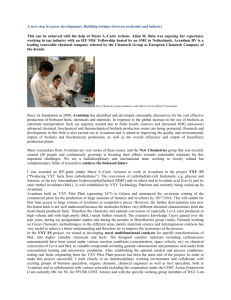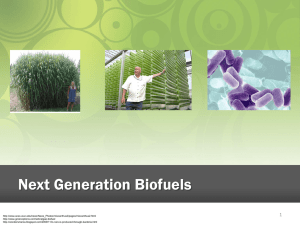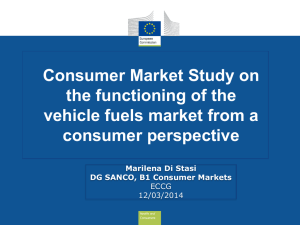Clean_power_for_transport_
advertisement
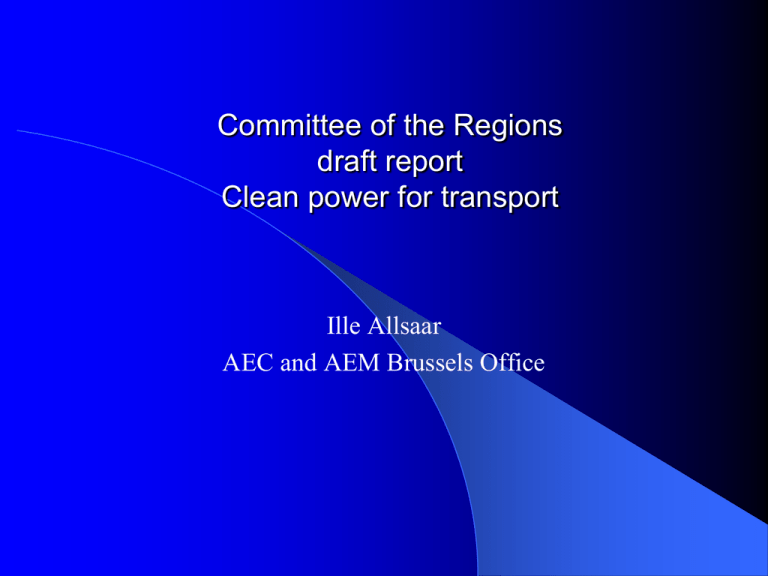
Committee of the Regions draft report Clean power for transport Ille Allsaar AEC and AEM Brussels Office Introduction Rapporteur: Saima Kalev (EE/EA) Member of Jõgeva Rural Municipality Council First discussion in the Commission for Territorial Cohesion Policy (COTER) on 26th of February 2013 Adoption of the draft opinion by the COTER Commission on 7.05.2013 Adoption of the draft opinion by the CoR plenary session on 3-4.07.2013 Reference documents Communication from the Commission to the European Parliament, the Council, the European Economic and Social Committee and the Committee of the Regions - Clean Power for Transport: A European alternative fuels strategy COM(2013) 17 final Proposal for a Directive of the European Parliament and of the Council on the deployment of alternative fuels infrastructure COM(2013) 18 final EC communication main aim The Commission Communication on a European alternative fuels strategy evaluates the main alternative fuel options available to substitute oil whilst contributing to reduce greenhouse gas (GHG) emissions from transport, and suggests a comprehensive list of measures to promote the market development of alternative fuels in Europe, complementing other policies for reducing oil consumption and GHG emissions from transport. EC Directive main aim This proposal for a Directive aims at ensuring the build-up of alternative fuel infrastructure and the implementation of common technical specifications for this infrastructure in the Union. Its objective is to facilitate the work of market forces and contribute with this initiative to economic growth in Europe. Estimated savings and costs A strategy for the transport sector to gradually replace oil with alternative fuels and build up the necessary infrastructure could bring savings on the oil import bill of € 4.2 billion per year in 2020, increasing to € 9.3 billion per year in 2030, and another € 1 billion per year from dampening of price hikes. The investment in the build-up of alternative fuels infrastructure is estimated at € 10 billion. The main alternative fuel options Electricity Hydrogen Biofuels Natural gas (in the forms of Compressed Natural Gas (CNG) Liquefied Natural Gas (LNG), or GasTo-Liquid (GTL)) And Liquefied Petroleum Gas (LPG). Priority Fields for further EU Action addressing alternative fuels infrastructure, developing common technical specifications, addressing consumer acceptance, addressing technological development. Key messages of the Committee of the Regions it is not only about the change in a transport system, but also about national energy policies, as Member States have to choose a long term investment policy in alternative fuel infrastructure; while setting up deadlines for infrastructure in place, the Commission should taken into account in addition the geographical and climatic differences, and new technological solutions and timing necessary to work out and to agree over those common standards. while setting up deadlines for infrastructure in place, the Commission should taken into account in addition the geographical and climatic differences, and new technological solutions and timing necessary to work out and to agree over those common standards. Estonia is the first in the world to open a nationwide electric vehicle fastcharging network. What if there will be new standards which do not match with the current network’s standards? At the same time it is clear that the standards are needed in order to travel electric vehicle from one country to another… Country-wide quick charging network (163 quick chargers) Cities and municipalities in Estonia have more than 400 electric vehicles in everyday use (mostly used by social workers) Key messages of the Committee of the Regions finds that the deadlines set out in the Directive are too short because before adopting the national policy frameworks and the administrative rules should be preceded by a collaboration of local and regional authorities, national-depth analysis and discussion, involving the various parties, and the development of sustainable financial schemes; Remind that while implementing the Commission's proposals must ensure that the operation of the free market and competition would be disturbed as little as possible. Should make it more attractive to private companies, and removing the fears that exist today. Key messages of the Committee of the Regions as an assembly of local and regional representatives has to inspire and support the discussion and exchange of experience over alternative fuel use for the purpose of urban transport to have greener, cleaner and sustainable cities. It should also discuss how regional and local authorities could influence behaviour of citizens to encourage them to use alternative fuels engines more. Key messages of the Committee of the Regions pointed out that while making policy choices it is necessary to ensure affordable energy prices for citizen, taking into account still shrinking household incomes in many Member States. It applies also to prices of infrastructure and new alternative fuels. infrastructure requirements should be based on economic expediency, and to ensure compatibility of investments already on the market and the vehicles. Key messages of the Committee of the Regions Common technical specifications, are necessary to kick start the market, to ensure economy of scale and EU wide circulation with alternative fuels. Common standards should help to meet the objective of the Directive in the Member States and to ensure the long-term certainty for investors and infrastructure investments. Key messages of the Committee of the Regions vision of the necessary investment needs to be comprehensive and realistic, and funding opportunities from various EU funds must be clear and coherent if some financing are to be provided under the Regional Policy it should be programmed during next months. the CoR supports, that urban mobility plans that may be financed under the future ERDF funding. Key messages of the Committee of the Regions observing the principle of technological neutrality, strategy must cover all possibilities, without favoring any specific fuel. use of biofuels in transport will have the intended, positive outcome only if biofuels are produced from commodities obtained in a way that does not distort the natural balance of the environment, food supply or the economic balance of the market, or social balance . Key messages of the Committee of the Regions national policy frameworks should be balanced in their energy sources choices, not to turn from one (oil outside the EU) dependency into another (natural gas outside the EU) and diversification of alternative fuels sources shall be proposed, taking into account the elements needed for its production Key messages of the Committee of the Regions introducing alternative fuels in the EU mean a necessity to change consumer behaviour by encouraging them to use private cars with alternative fuels; there is a need for a public campaign to make consumers aware of this change and its consequences. "no one size fits all", there may be different ways to encourage alternative fuels use, as also participation of prosumers, (producers and consumers of energy) in an energy network as a remedy for, from one side, growing energy needs, from another, for switch from carbon energy production to renewables. But this policy has to be encouraged as well, also by having technology to buy and to use for affordable price. Thank you!
